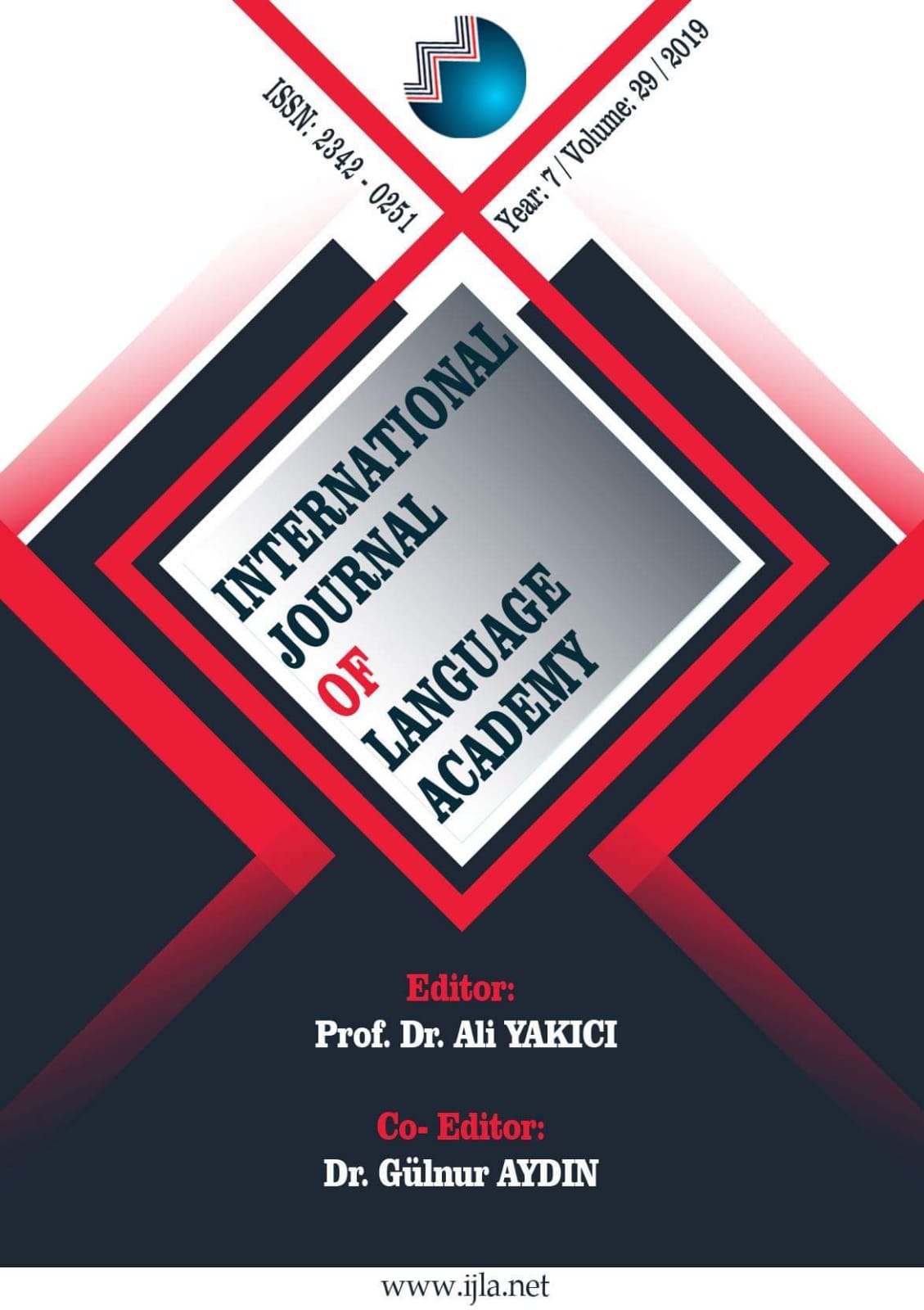Author :
Abstract
The issue of critical discourse analysis has become a concern for researchers, literary scholars and critics themselves, as a result of the breadth of critical lesson areas and the variety of theories, methods and terminology. Since criticism is so important, it has also become a subject for study and analysis. While the literary text is bearable, criticism in general is unlikely because it is constantly formed in a space of knowledge concerned with intellectual origins, adheres to the methodological limits, and belongs to a tree of mind. This means that the analysis of critical discourse requires greater accuracy, and can be practiced in a very private and fertile space, within the so-called (criticism of criticism). Our research proposes to follow three main axes in the analysis of critical discourse. It deals with the priorities of the emergence of criticism of literary texts and historical foundations and monitors the nature of the critical lesson and its affiliation, as it evidences the power of other discourses on critical discourse represented by the philosophical, religious, social discourse and others, that is, the power of the coordinator over criticism and the decline of its essential role. The second is the theoretical and conceptual axis. It deals with the intellectual boundaries of terms and concepts, which requires putting the concepts in their proper scientific quorum. The structure deals with literal criticism as a text, that is, the operative text of the critical text within its linguistic boundaries, which contributes to drawing the kinetics (text) of the critical discourse and its sin. The purposes are directed towards the interpretation of the process of assets and interaction such as: parties to the discourse and institution, and society, and others. As well as the interpretation that requires reading the extinct aspects of the meaning; especially in the texts of the original critical theories that need to be understood and accurate understanding in order to be accurate in application. From this scenario, our research suggests that the analysis be carried out with a vision based on the follow-up of its historical meanings, and the most important cognitive joints, with an intellectual methodology that looks at the overall issues to shed light on the ways in which its textual structure is formed and the potential of its knowledge.
Keywords
Abstract
The issue of critical discourse analysis has become a concern for researchers, literary scholars and critics themselves, as a result of the breadth of critical lesson areas and the variety of theories, methods and terminology. Since criticism is so important, it has also become a subject for study and analysis. While the literary text is bearable, criticism in general is unlikely because it is constantly formed in a space of knowledge concerned with intellectual origins, adheres to the methodological limits, and belongs to a tree of mind. This means that the analysis of critical discourse requires greater accuracy, and can be practiced in a very private and fertile space, within the so-called (criticism of criticism). Our research proposes to follow three main axes in the analysis of critical discourse. It deals with the priorities of the emergence of criticism of literary texts and historical foundations and monitors the nature of the critical lesson and its affiliation, as it evidences the power of other discourses on critical discourse represented by the philosophical, religious, social discourse and others, that is, the power of the coordinator over criticism and the decline of its essential role. The second is the theoretical and conceptual axis. It deals with the intellectual boundaries of terms and concepts, which requires putting the concepts in their proper scientific quorum. The structure deals with literal criticism as a text, that is, the operative text of the critical text within its linguistic boundaries, which contributes to drawing the kinetics (text) of the critical discourse and its sin. The purposes are directed towards the interpretation of the process of assets and interaction such as: parties to the discourse and institution, and society, and others. As well as the interpretation that requires reading the extinct aspects of the meaning; especially in the texts of the original critical theories that need to be understood and accurate understanding in order to be accurate in application. From this scenario, our research suggests that the analysis be carried out with a vision based on the follow-up of its historical meanings, and the most important cognitive joints, with an intellectual methodology that looks at the overall issues to shed light on the ways in which its textual structure is formed and the potential of its knowledge.
Keywords
- م.2004،1بنغازي،ط-المسدي،دارالكتابالجديدالمتحدةاألدبوخطابالنقد:عبدالسالم .1
- -األنسدداقالذهنيددةفدديالخطددابالشددعري،التشددعبواالنسددجام:جمددالبندددحمان،رؤيددةللنشددروالتوزيددع .2 م.2011،1القاهرة،ط ،مددارس35،ج30،ع9جدددة،مددج-بعددعخصددائصالخطدداب:محمدددمفتدداح،مجلددةعالمدداتفدديالنقددد .3 م.2000
- النقددديمددنالنظريددةإلددىالممارسددة:محمدددصددابرعبيددد،منشددوراتضددفاف،منشددوراتتجلدديالخطدداب .4 م.2013،1الرباط،ط-الجزائر،داراألمان-االختالف
- -ميشالغوفار،ترجمة:محمدمحمود،المؤسسةالجامعيةللدراساتوالنشروالتوزيدع-تحليلالشعر:جان .5 م.2008،1بيروت،ط
- (،منشدوراتوزارة1اي،ترجمةوتقديم:محييالدينصدبحي،نظريدةاألدب)تشريحالنقد:نورثروبفر .6 م.2005،1دمشق،ط-الثقافةالسورية ،1بيروت،ط-الثقافةالعربيةوالمرجعياتالمستعارة:عبدهللاإبراهيم،المؤسسةالعربيةللدراساتوالنشر .7 م.2004
- الكويدت،-قطدوس،مكتبدةالعروبدةللنشدروالتوزيدعدليدلالنظريدةالنقديدةالمعاصدرةمنداهجوتيدارات:بسدام .8 ،د.ت.1ط م.2007،1دمشق،ط-فيالنقداألدبي:صالحفضل،اتحادالكتابالعرب .9
- فيسوسيولوجياالخطاب،منسوسيولوجياالتمثالتإلىسوسديولوجياالفعدل:عبدالسدالمحميدر،الشدبكة .10 م.2008،1بيروت،ط-العربيةلالبحاثوالنشر
- ماهوالنقد؟:بولهيرنادي،ترجمدة:سدالفةحجداوي،مراجعدة:عبددالوهابالوكيدل،سلسدلةالمائدةكتداب، .11 م.1،1989بغداد،ط-دارالشؤونالثقافيةالعامة
- م.1979،1ليبيا،تون ،ط-مدخلإلىتاري اآلداباألوربية:عمادحاتم،الدارالعربيةللكتاب .12 تطبيقدده:محمدداألخضددرالصدبيحي،الدددارالعربيددةللعلدومناشددرون،مددخلإلددىعلددمالدنصومجداالت .13 م.2008،1الجزائر،ط-منشوراتاالختالف
- المغدرب،-المدخلإلىمنداهجالدراسدةاألدبيدةفدياألدبالعربديالحدديث:عمرالطالب،منشدوراتعكداظ .14 م.1988،1ط محمدديحيداتن،الددارالعربيدةللعلدومالمصطلحاتالمفاتيحلتحيلالخطداب:دومينيدكمدانغونو،ترجمدة: .15 م.2008،1الجزائر،ط-ناشرون،منشوراتاالختالف ،2،ع1القدداهرة،مددج-مندداهجالنقددداألدبدديبددينالمعياريددةوالوصددفية:عزالدددينإسددماعيل،مجلددةفصددول .16 م.1981 -يالعربدينظريةالتأويل،الخطابوفائعالمعندى:بدولريكدور،ترجمدة:سدعيدالغدانمي،المركدزالثقداف .17 م.2006،2الدارالبيضاء،ط
- -النظريدةالنقديددةالغربيددةمددنأفالطددونإلددىبوكاشدديو:عيدالدددحيات،المؤسسددةالعربيددةللدراسدداتوالنشددر .18 م.2007،1األردن،ط
- بيدروت،-النقدالجمالي:أندريهريشدار،ترجمدة:هندريزغيدب،سلسدلة)زدنديعلمدا(،منشدوراتعويددات .19 م.2007،1ط
- ،روايةتعلم:تزفيتانتدودوروف،ترجمدة:سداميسدويدان،مراجعدة:ليليدانسدويدان،دارالشدؤوننقدالنقد .20 م.1986،2بغداد،ط–الثقافية





